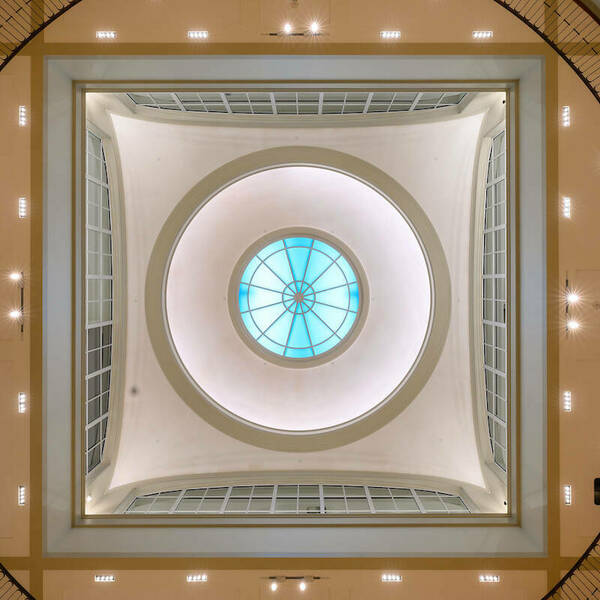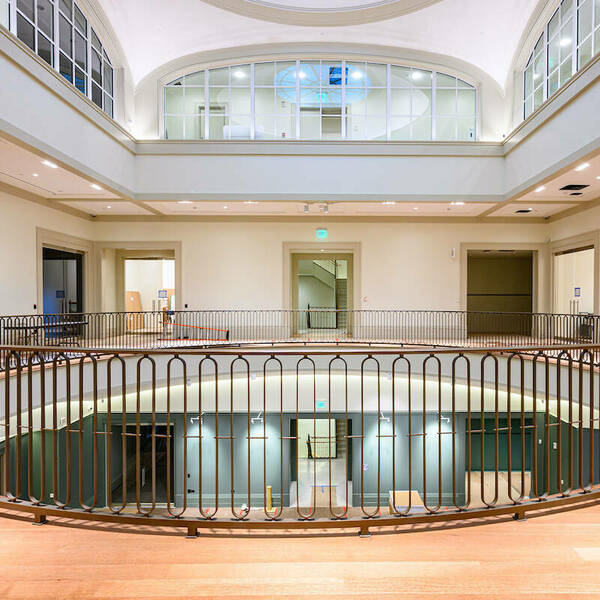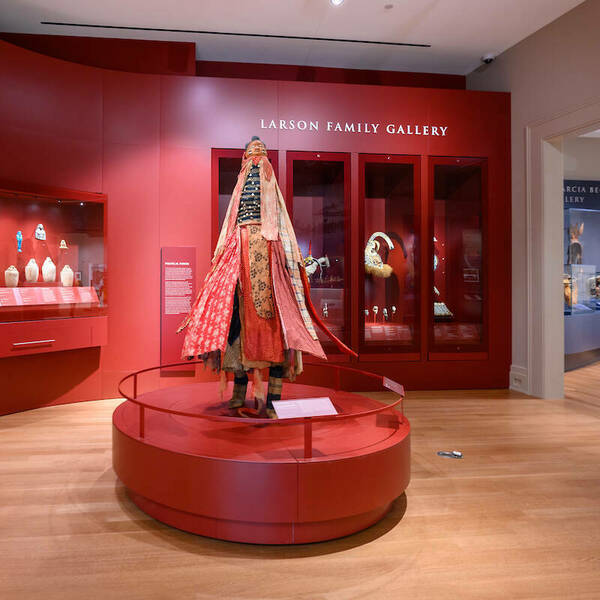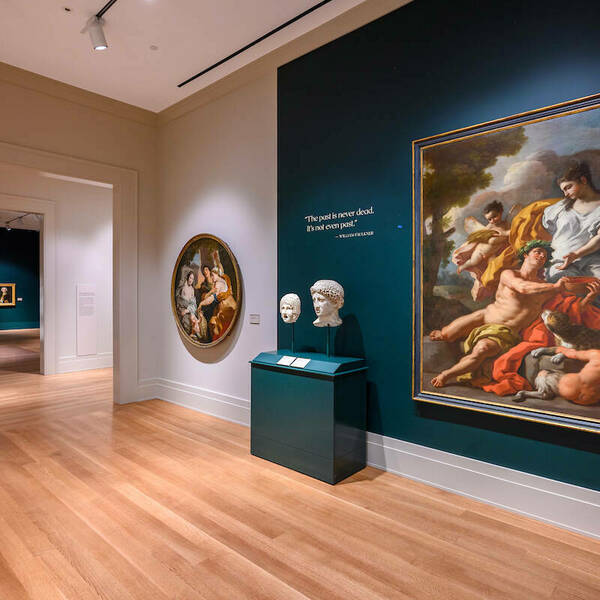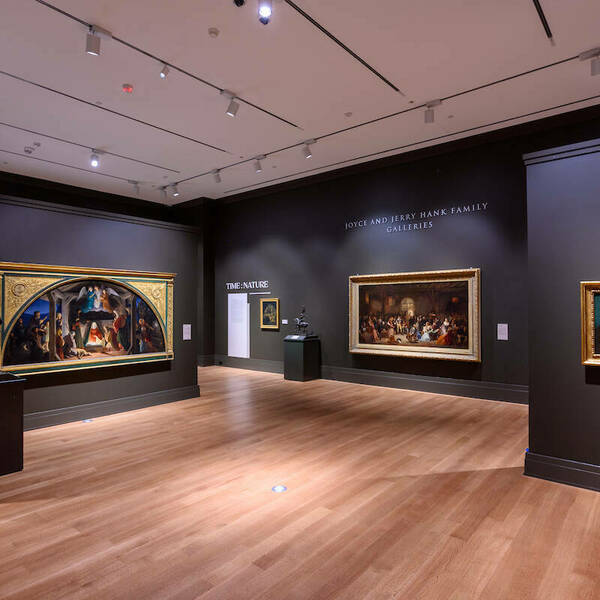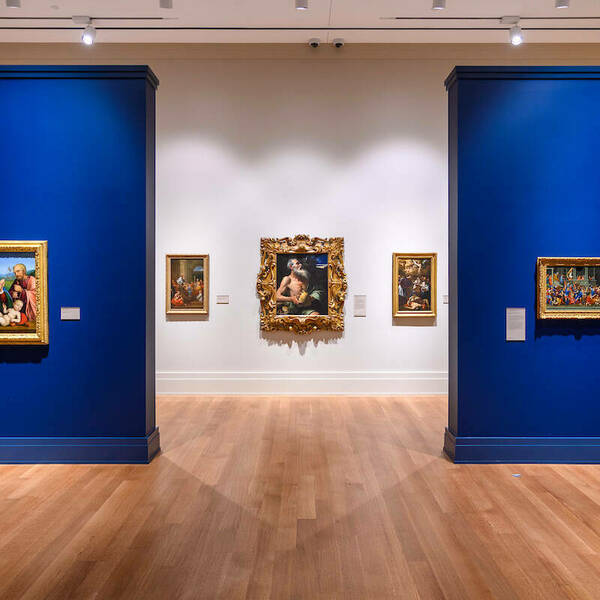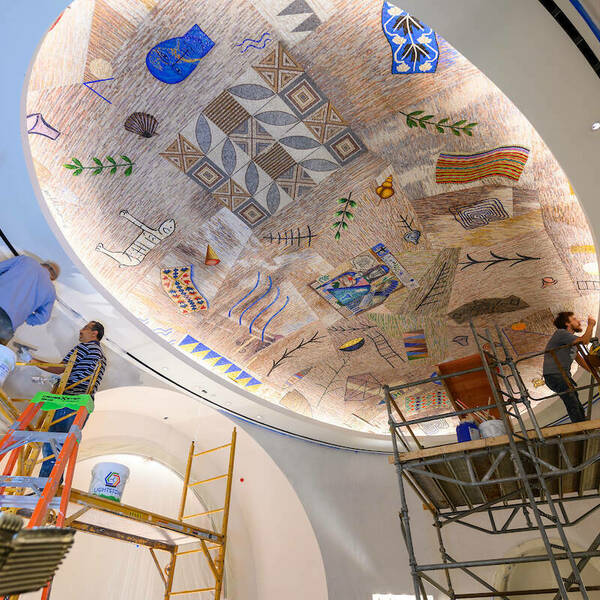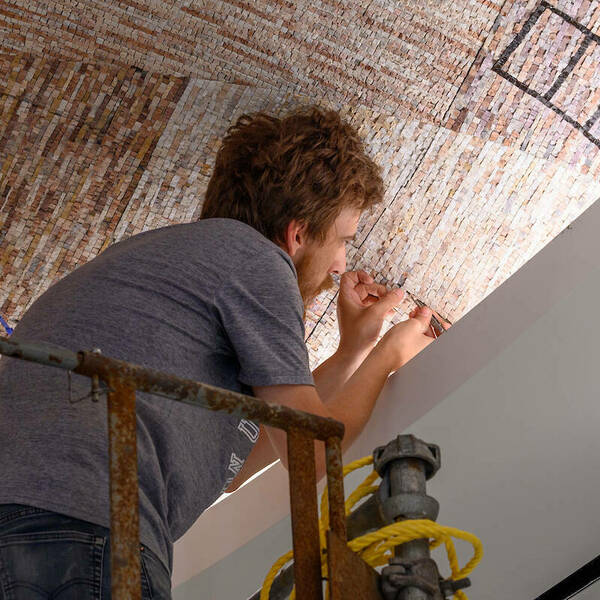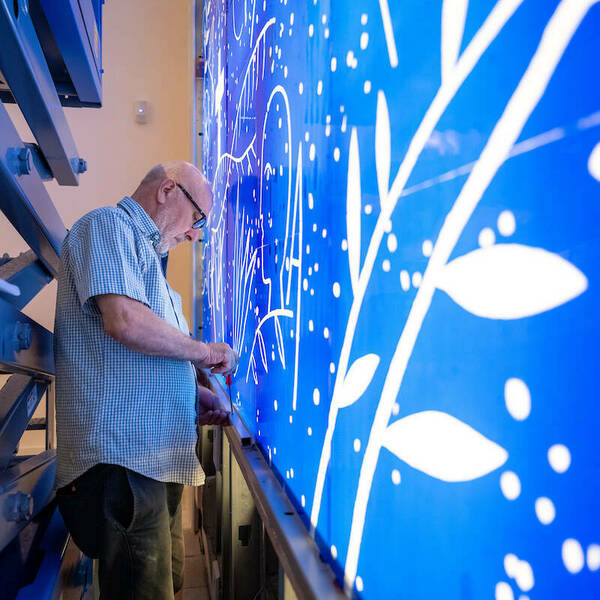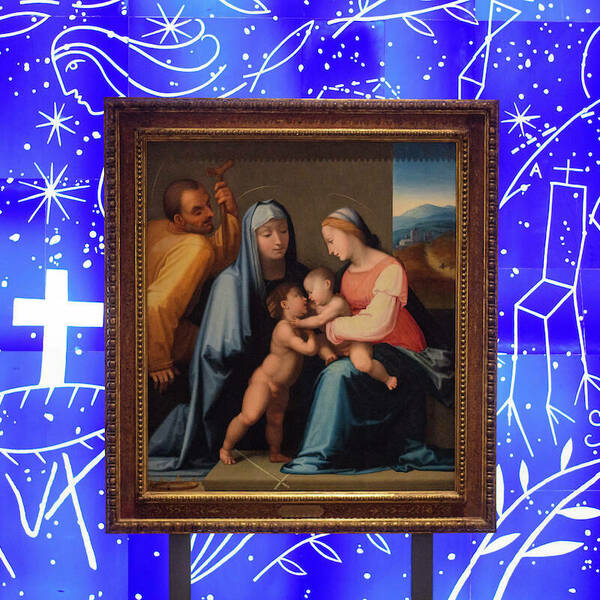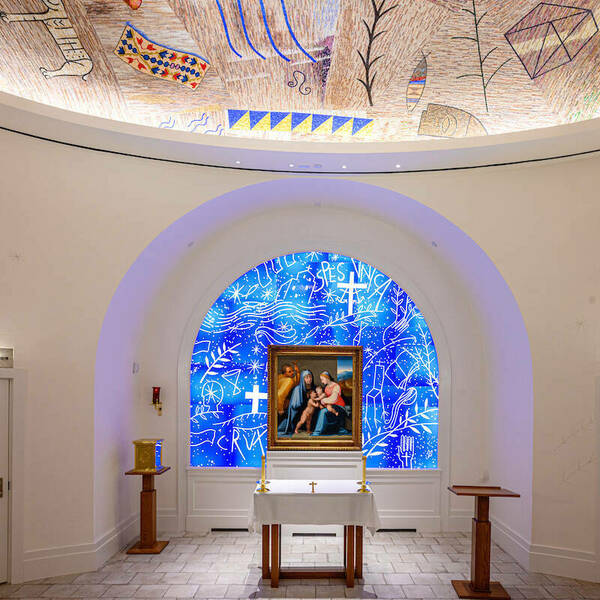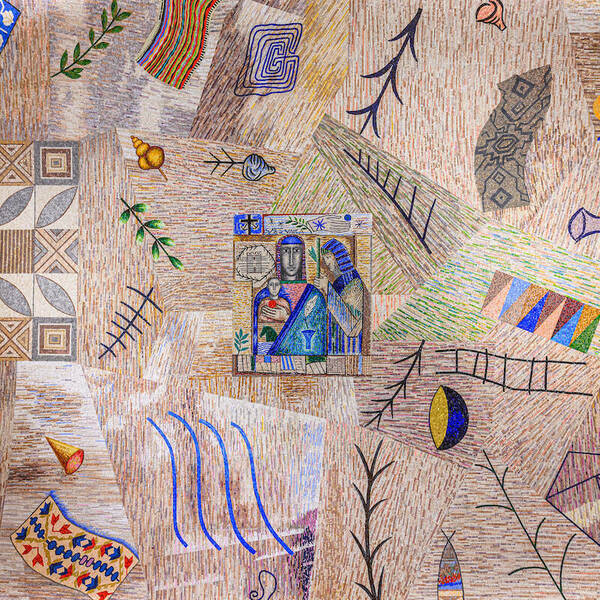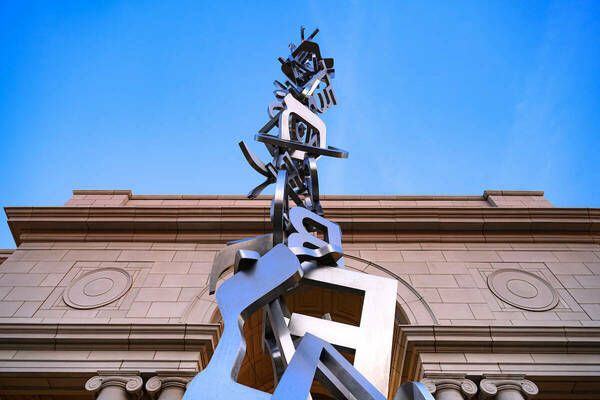
There’s a lot to see when you enter the main floor of the new Raclin Murphy Museum of Art.
Your eyes may be drawn upward toward the source of the natural light that floods the three-story atrium or to the many gallery entrances visible from the center.
Alternatively, your gaze may become fixed on the south-central wall and the lights and recycled silver that make up the work “Silver Saint Joseph Watershed” by artist Maya Lin, whose other works include the Vietnam Veterans Memorial in Washington, D.C.
Even the floor is worthy of your attention. “Sea of Stars” — an original work by artist Kiki Smith — occupies more than 1,000 square feet of floor space and includes 39 bronze stars embedded in soft gray-blue terrazzo.
Sarah Martin, curator of education public programs, hopes you also notice the neon sign that states, “I belong here.”
You belong here
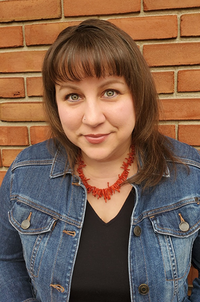
“We want visitors to feel that this is their museum,” Martin said. “That’s at the core of the spaces that have been created, and also the way we’re thinking about the museum programmatically, educationally.”
Martin explained that the exhibit and teaching galleries were designed for use as educational tools.
“Yes, they are beautiful and thoughtfully arranged and there’s a story being told, but part of the story is the visitor and what they bring to the equation,” she said.
“Pieces are placed in a way that they have conversations with each other and the visitor. There are amazing text panels and QR codes that take the visitor to interviews with the artists, really activating the artwork rather than just presenting it on the wall as if it were a static, inanimate object. We tried to bring everything to life.”
Martin’s primary audiences are the off-campus community and K-12 students who, in the past, visited the Snite Museum of Art on campus and will soon flock to the new museum.
Free admission, school bus fund
“It’s free for anyone to visit and we do not charge for school visits. We have a bus fund that will (partially) reimburse schools for transportation costs. Buses are often an expense for which school districts do not have a budget,” Martin said, adding that it’s important for young people to explore art.
“I often tell groups of students that artists see the world differently. They offer us points of view that maybe we’d never thought of before or we hadn’t been able to access until we encountered a special piece of art.
“Bringing young students into the museum expands their reality, allowing them to explore new ideas and new places without leaving home. You can explore the world in your own backyard right here at the Raclin Murphy,” she said.
Free, three-day opening event
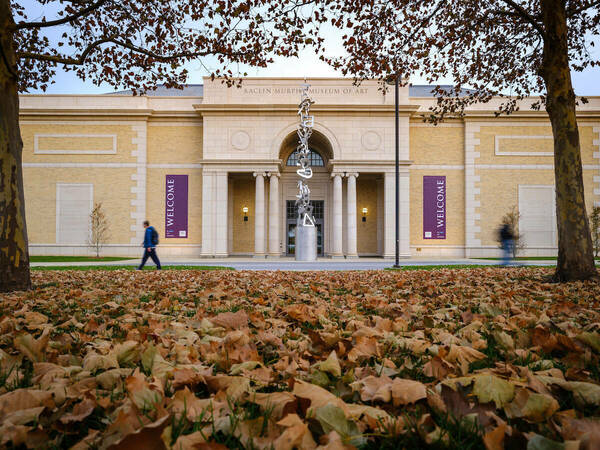
The Raclin Murphy Museum of Art will open to the public on Friday, Dec. 1, as the first of a three-day celebration.
“We started thinking about the opening as a kind of block party. We’re part of the neighborhood, so let’s welcome everyone in. A three-day event in the new space is a new opportunity for Notre Dame and the community to come together,” Martin said.
The museum stands at the northeast corner of Eddy Street and Angela Boulevard, just north of Eddy Street Commons. It is named for lead donors Ernestine Raclin, who passed away in July, and her daughter and son-in-law, Carmi and Christopher Murphy.
“You could come to all three days and it will be a different experience every time,” Martin said. “We will have a wealth of programming and experiences packed into the weekend, showcasing all these new spaces and all these newly commissioned artworks. And we’ll be doing something I don’t think any of the staff has done in our careers — open a new museum.”
Mary, Queen of Families Chapel
One of the many treasures inside the 77,000-square-foot museum can be found on the second level: the Mary, Queen of Families Chapel.
Clear glass doors invite you to enter a light and bright space where sacred art, hundreds of years old, and newly commissioned art seem at home with each other. The new works include two by Mimmo Paladino — a royal blue stained-glass panel behind the altar and the mosaic ceiling that tells the converging stories of the Holy Family; the Congregation of Holy Cross; St. Joseph Valley, where the University of Notre Dame sits; and the Indigenous people of this region.
“In the mosaic you’ll see woven rug patterns that are inspired by Indigenous patterns, and there are some references to the (St. Joseph) river and flora and fauna of the area,” Martin said of the chapel, which has been consecrated and where Masses will be held.
“It is a space that all visitors can enter, whether they are Catholic or not, and experience sacred art in a context that makes sense versus in a gallery, which is not where it was meant to be seen.”
Exhibit and teaching galleries
The 23 galleries take the visitor back in time. A European art gallery takes visitors to art created in the 1700s. There is also the Indigenous Art of the Americas gallery, which includes works created across North America and South America.
“We give you a kind of vista into some of the spaces, a dramatic entrance with the lighting and the (jewel-tone) colors of the walls. All of this is very intentional to create a space that makes sense for the art that is housed within it. So, it’s not just white walls with artworks hung on them. It’s kind of an experience in its entirety.”
Martin looks forward to the K-12 visits, which, in the studios, will offer students the opportunity to create as well as to observe.
“They’ll look at art from a particular time period or collection or theme, and they will continue that with a hands-on exploration in the studios. We’re excited to get the younger artists in here and allow them to explore their ideas.
“We will also do a lot of things in the galleries that you maybe wouldn’t expect, like writing or singing and dancing or posing or acting. We want to really bring to life what is in the galleries and make it relevant to young people.”
Martin leaves it to the visitor to determine their adventure at the Raclin Murphy Museum of Art. She hopes that when you enter the atrium, which offers a 360-degree view of the galleries, you feel the love.
“The artwork is literally giving you a big hug.”
